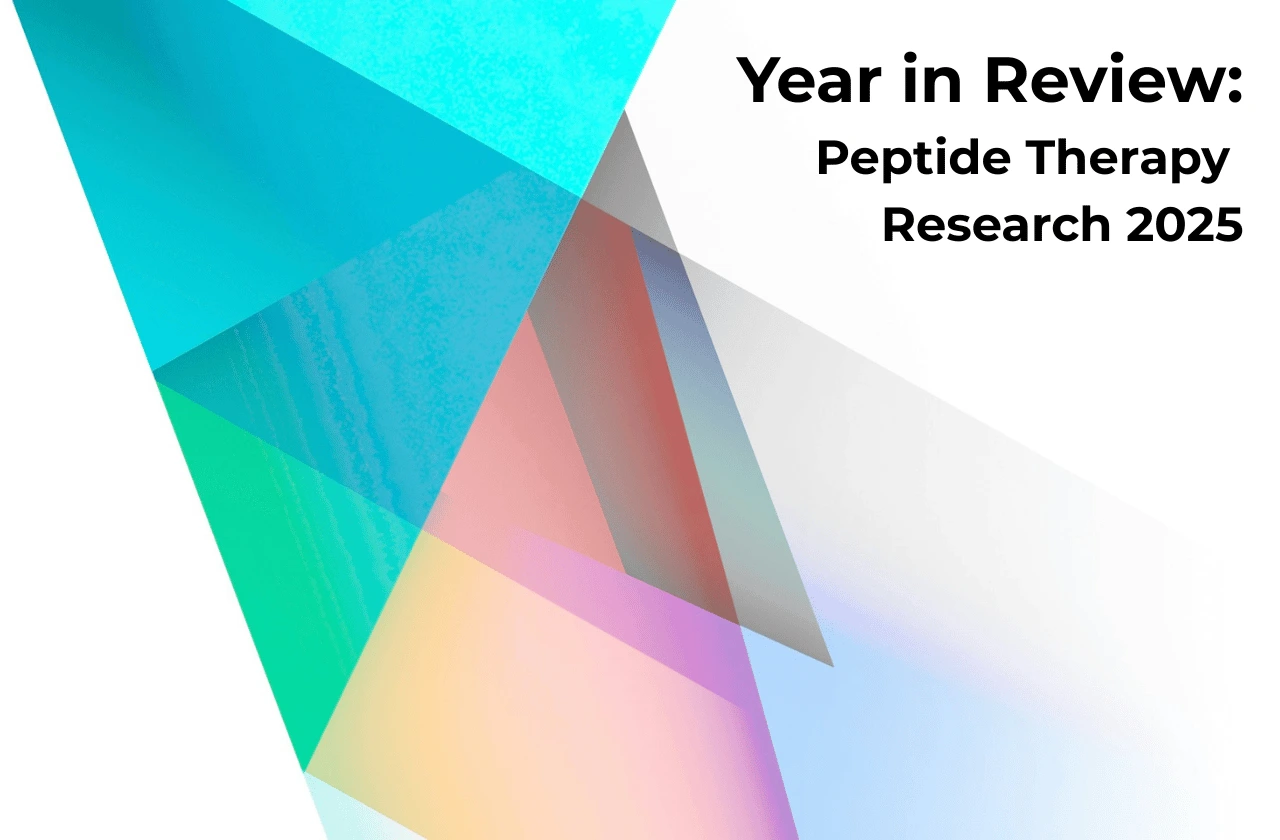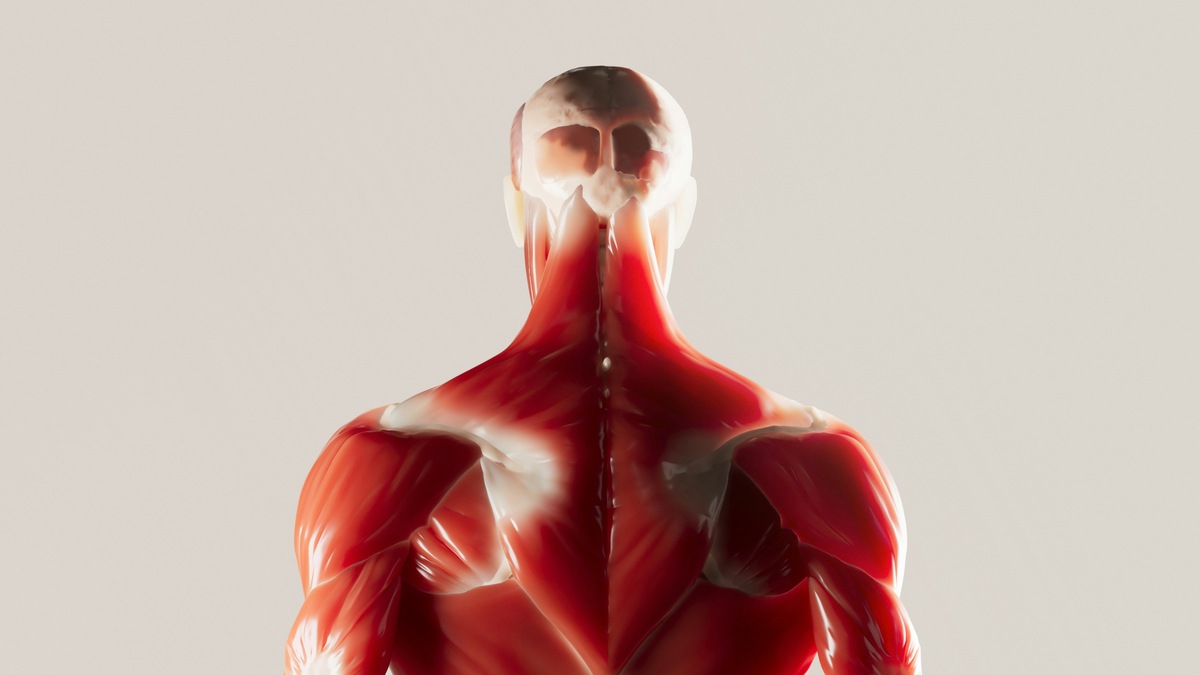This article is for informational purposes only and does not constitute medical advice. Always consult with a qualified healthcare provider before considering any peptide therapy.
HGH Fragment 176-191 is a synthetic peptide consisting of 16 amino acids that represents a small section of human growth hormone. This fragment of the natural growth hormone molecule targets amino acids 176 through 191 at the C-terminal end.
Researchers developed this compound to explore fat-burning properties without the broader systemic effects of full HGH therapy. The peptide maintains the lipolytic properties of growth hormone while theoretically avoiding effects on blood sugar regulation and IGF-1 production.
What makes this compound controversial? Fragment 176-191 has never been studied in human clinical trials. Most safety and efficacy claims come from animal research and extrapolation from a modified version called AOD-9604.
Quick Takeaways
- HGH Fragment 176-191 is a synthetic peptide derived from amino acids 176-191 of human growth hormone, designed to target fat metabolism.
- The unmodified fragment has no human clinical trials, with all evidence coming from animal studies or research on the modified compound AOD-9604.
- Common dosing protocols range from 200-500 mcg per day via subcutaneous injections, though these lack scientific validation.
- The peptide carries unknown long-term safety risks, potential glucose metabolism disruption, and contamination concerns from unregulated sources.
What Is HGH Fragment 176-191?
Fragment 176-191 is a synthetic peptide that mimics a specific portion of human growth hormone. The chemical formula is C39H60N8O13. Unlike full-length HGH, this fragment doesn’t bind to growth hormone receptors in the same manner.
The peptide was created to isolate the fat-breaking properties of growth hormone. Researchers hoped to achieve fat loss benefits without triggering the growth-promoting and metabolic effects associated with full HGH therapy.
How Does It Differ From Full HGH?
The fragment targets fat metabolism without raising IGF-1 levels or affecting muscle protein synthesis. This selectivity comes from its incomplete amino acid sequence, which prevents full binding to growth hormone receptors.
Full HGH affects multiple body systems. It influences muscle growth, bone density, glucose metabolism, and cellular regeneration. Fragment 176-191 theoretically acts on adipose tissue without these broader effects.
The most common confusion involves mixing up Fragment 176-191 with AOD-9604. AOD-9604 includes an additional tyrosine amino acid and has actually been tested in humans. The unmodified fragment has not.
How HGH Fragment 176-191 Works
The proposed mechanism involves several pathways in fat metabolism. Research suggests the fragment works through beta-3 adrenergic receptors and direct effects on adipose tissue.
Animal studies provide most of our understanding. The mechanism of action targets fat cells while leaving other tissues largely unaffected.
The Fat Loss Mechanism
A 2001 study by Heffernan et al. found that lipolytic fragments increased beta-3 adrenergic receptor expression in mice(1). These receptors regulate thermogenesis in muscles and fat mobilization in adipose tissue.
The peptide appears to:
- Stimulate lipolysis (fat breakdown) in adipose tissue
- Inhibit lipogenesis (formation of new fat cells)
- Increase the number of beta-3 adrenergic receptors in fatty tissues
- Promote fat utilization without affecting insulin sensitivity
Research published in 2000 showed that AOD-9401 demonstrated “lipolytic and antilipogenic activity similar to that of the intact hormone” when given orally to mice(2). The compound reduced body weight gain by roughly 50% in obese mice over three weeks.
Here’s the catch: the fragment only worked in mice that were overweight or obese. Mice with normal weight didn’t experience body mass loss. This suggests the mechanism may depend on existing metabolic dysfunction.
Does HGH Fragment 176-191 Work?
The evidence base for Fragment 176-191 remains remarkably thin, particularly in humans. Most research focuses on rodent models or the modified compound AOD-9604.
Animal Studies Show Promise
Multiple rodent studies showed fat reduction effects. One investigation found that synthetic lipolytic fragments reduced weight gain in obese mice. Another study explored cartilage regeneration, finding that HGH Fragment given to rabbits “appeared to result in increases in cartilage production.”
These animal studies suggested the fragment could regulate fat metabolism and potentially support the musculoskeletal system. The results looked promising in laboratory settings.
The Human Evidence Problem
No human clinical trials exist for the unmodified Fragment 176-191. Zero. This stands in stark contrast to AOD9604, which underwent human trials between 2001 and 2007.
Six human trials were conducted on AOD-9604. These included two Phase IIb studies with 300 and 500 obese adults. A 2014 safety review noted that “AOD9604 was found to be safe and well tolerated” in all studies(3).
The final Phase 2B OPTIONS Study in 2007 delivered disappointing results. Trial results showed weight loss compared to placebo “was too low to support the commercial development of AOD9604.” The study enrolled 536 subjects who followed intensive diet and exercise regimens.
Dr. Richard Holt and colleagues noted in a 2019 review that GH fragments like AOD-9604 and HGH 176-191 are banned by the World Anti-Doping Agency(4). The absence of human trials means efficacy claims rest on extrapolation from animal data and a different compound.
Third-Party Tested, 99% Purity
Order lab-verified peptides from our top recommended vendor.

Claimed Benefits of HGH Fragment 176-191
Marketing claims for Fragment 176-191 extend beyond what research supports. These purported benefits appear frequently in online discussions and vendor materials.
| Claimed Benefit | Supporting Evidence Level |
|---|---|
| Fat Loss | Animal studies only |
| Metabolic Enhancement | Theoretical based on HGH properties |
| Muscle Preservation | No direct evidence |
| Cartilage Support | One rabbit study |
| Improved Recovery | Anecdotal reports |
| Better Sleep Quality | No evidence for fragment |
Fat Loss: The primary claim centers on enhanced fat breakdown and reduced fat storage. Proponents suggest the peptide targets “stubborn” adipose tissue without affecting blood sugar levels.
Metabolic Enhancement: Some sources claim improved energy expenditure and metabolic rate. These assertions come from the fragment’s theoretical effects on lipid metabolism.
Muscle Preservation: Unlike caloric restriction alone, Fragment 176-191 supposedly helps maintain lean muscle mass during fat loss phases. This claim lacks human validation.
Body Composition: Users hope to achieve significant weight loss and reducing body fat while maintaining muscle tissue. The compound promises better body composition outcomes than diet alone.
Cartilage and Bone Support: Research explored giving hyaluronic acid and HGH Fragment to rabbits, which showed increased cartilage production. This suggests potential benefits for the musculoskeletal system and tissue regeneration.
No IGF-1 Elevation: The fragment doesn’t raise IGF-1 levels, theoretically avoiding growth-promoting effects. This makes it appear safer than full growth hormone therapy.
Many of these various benefits remain unproven in human subjects. The gap between claimed and demonstrated effects is wide.
Side Effects and Safety Concerns
The safety profile of Fragment 176-191 in humans remains unknown. Without clinical trials, we can’t characterize the true risk profile. Studies suggest several concerns based on limited data and related compounds:
- Injection Site Reactions: Users report local sensitivity, redness, or irritation where they inject. These reactions are common with subcutaneous injections of peptides.
- Glucose Metabolism Disruption: Early research from 1978 found that C-terminal HGH fragments “produced a short-lived rise in blood glucose and a more sustained rise in plasma insulin.” The study noted these peptides “reduced insulin sensitivity of the animals in intravenous insulin tolerance tests.”(5)
- This contradicts claims that the fragment doesn’t affect glucose homeostasis. The peptide may disturb glycogen synthase management, which could induce changes in circulating glucose levels.
- Hypoglycemia Risk: Some sources warn about blood sugar impacts. People with existing metabolic conditions face higher risks.
- Unknown Long-Term Effects: As one reviewer stated, “Very little is known about the substance’s potential side effects.” Chronic safety data simply doesn’t exist.
- Drowsiness: Minor metabolic dysfunction and drowsiness appear in anecdotal reports. These side effects suggest broader metabolic impacts than claimed.
Peptide Contamination Problem
Fragment 176-191 is not FDA-approved for any use. Most sources come from unregulated manufacturers.
Quality control varies wildly. Contaminated or low-quality peptides can cause infections, allergic reactions, or toxic effects. The peptide reconstitutes cloudy when mixed with bacteriostatic water, which can mask contamination issues.
Peptides must be properly manufactured and stored. Without regulation, you can’t ensure optimal handling or purity.
HGH Fragment 176-191 Dosage Protocols
Common dosing protocols come from bodybuilding forums and unregulated vendors rather than clinical research. These recommendations lack scientific validation.
- Typical Dosing: Most protocols involve 200-500 mcg per day administered via subcutaneous injections. Users typically inject on an empty stomach to maximize absorption.
- Timing: If dosed once daily, morning administration is most common. Twice-daily protocols split doses between morning and evening, at least 2-3 hours from meals.
- Duration: Cycles typically run 4-12 weeks. Some protocols recommend washout periods between cycles to minimize tolerance or side effects.
- Administration: Subcutaneous injection into abdominal fat tissue is the standard method. The injection site should rotate to prevent tissue damage.
These protocols cannot be recommended. They lack evidence-based support and carry unknown risks. Anyone considering peptide therapy should work with qualified healthcare providers.
Is HGH Fragment 176-191 Legal?
The legal status of Fragment 176-191 exists in a gray area that varies by jurisdiction and intended use.
United States: The FDA has not approved Fragment 176-191 for any use. It’s legal only for “research purposes” and cannot be legally marketed for human consumption. The FDA sent warning letters to companies selling peptides as unapproved drug products in 2025.
Sports: Both Fragment 176-191 and AOD-9604 appear on the World Anti-Doping Agency prohibited list under “growth hormone fragments.” Athletes testing positive face disqualification and potential bans.
Compounding Pharmacies: A March 2024 statement clarified that peptides can only be legally compounded under specific circumstances, typically when FDA-approved drugs are in shortage. Growth hormone fragments don’t qualify for this exception.
The FDA posted more than 100 warning letters to companies marketing peptides in 2024-2025. Enforcement has intensified against unapproved peptide products.
For more information on peptide regulations, see our guide on whether peptides are legal.
HGH Fragment 176-191 vs AOD-9604
Many people confuse these two compounds. While similar, they have key differences that affect their legal status and evidence base.
| Feature | HGH Fragment 176-191 | AOD-9604 |
|---|---|---|
| Composition | 16 amino acids (176-191) | Fragment + additional tyrosine |
| Human Trials | None | Six clinical trials |
| Safety Data | Unknown | Safe and well tolerated in trials |
| Efficacy | Unproven in humans | Failed to show sufficient weight loss |
| Legal Status | Not approved | Not approved, WADA banned |
The tyrosine modification in AOD-9604 was designed to make the peptide patentable. This change theoretically reduces protein biosynthesis stimulation while maintaining lipolytic properties.
Even with multiple human trials, AOD-9604 failed to demonstrate sufficient efficacy for commercial development. The unmodified Fragment 176-191 has even less supporting evidence.
Both compounds share the same legal restrictions. Neither is FDA-approved, and both appear on anti-doping banned lists.
Evidence-Based Alternatives for Fat Loss
Given the lack of evidence and legal concerns with Fragment 176-191, proven strategies deserve consideration. These approaches have robust research supporting their effectiveness:
- Resistance Training: Heavy resistance exercise is one of the most effective ways to maintain muscle mass during fat loss. A 2021 review found that resistance training combined with adequate protein “is required for the management of sarcopenia” and preserves lean mass during caloric restriction(6).
- Protein Optimization: Research consistently shows that protein intake of 2.2-3.0 g/kg body weight per day during caloric restriction maximizes fat-free mass retention. A 2016 study found that “higher compared with lower dietary protein during an energy deficit combined with intense exercise promotes greater lean mass gain and fat mass loss.”(7)
- Sleep Optimization: A 2025 UC Berkeley study revealed that “deep, restful sleep boosts levels of growth hormone to build strong muscle and bone and burn fat.” Sleep quality directly impacts natural GH production(8).
- Intermittent Fasting: A 2022 review noted that intermittent fasting induces “the metabolism of fatty acids to ketones” and improves metabolic processes through multiple pathways including AMPK activation and autophagy(9).
- Caloric Control: Sustainable fat loss requires a moderate energy deficit. Aim for 0.5-1.0% body weight loss per week to maximize fat reduction while preserving muscle tissue.
These approaches work effectively to regulate fat metabolism and achieve body composition goals. They carry no legal risks and have decades of supporting research.
For more options, explore our guides on best peptides for weight loss and best peptides for bodybuilding.
Common Myths About HGH Fragment 176-191
Several misconceptions circulate about Fragment 176-191. Setting the record straight helps people make informed decisions.
Myth 1: “It’s the same as AOD-9604”
While similar, AOD-9604 contains an additional tyrosine modification. More importantly, only AOD-9604 has been studied in humans. Fragment 176-191 has not.
Myth 2: “It burns fat without diet or exercise”
Even AOD-9604 studies showed effects were most pronounced when combined with dietary changes. The final phase 2B trial, which included intensive diet and exercise, showed no weight loss benefit over placebo.
Myth 3: “It’s safer than HGH”
The complete absence of human safety data means this cannot be confirmed. Potential glucose metabolism disruption and contamination from unregulated sources may introduce unique risks.
Myth 4: “It’s legal because it’s sold online”
Online availability doesn’t confer legal status. The peptide is not approved for human use, and its sale for human consumption violates FDA regulations.
Myth 5: “It targets stubborn fat”
No evidence shows the fragment selectively targets particular fat deposits. The concept of “spot reduction” remains unsupported in scientific literature.
Myth 6: “Athletes use it safely”
The peptide is banned in competitive sports. Athletes testing positive face serious consequences. The lack of quality control makes “safe” use impossible to ensure.
For women interested in peptides for female fat loss, evidence-based options with better safety profiles exist.
The Bottom Line
HGH Fragment 176-191 exists in a space of high marketing hype but minimal scientific validation. Animal studies suggest possible fat-metabolizing properties, but the complete absence of human trials makes efficacy claims speculative.
The risk-benefit ratio appears unfavorable. Even AOD-9604, which completed extensive human testing, failed to demonstrate sufficient weight loss benefit over placebo when combined with diet and exercise. The unmodified fragment lacks any human safety or efficacy data.
Legal concerns, unknown safety profiles, potential glucose metabolism disruption, and contamination risks create serious concerns. For those seeking body composition improvements, evidence-based methods offer proven effectiveness without these risks.
References
1. Heffernan M. The Effects of Human GH and Its Lipolytic Fragment (AOD9604) on Lipid Metabolism Following Chronic Treatment in Obese Mice and 3-AR Knock-Out Mice [Internet]. Vol. 142, Endocrinology. The Endocrine Society; 2001 Dec p. 5182–5189. Available from: https://doi.org/10.1210/en.142.12.5182
2. Heffernan MA, Jiang WJ, Thorburn AW, Ng FM. Effects of oral administration of a synthetic fragment of human growth hormone on lipid metabolism [Internet]. Vol. 279, American Journal of Physiology-Endocrinology and Metabolism. American Physiological Society; 2000 Sep p. E501–E507. Available from: https://doi.org/10.1152/ajpendo.2000.279.3.e501
3. Moré M, Kenley D. Safety and Metabolism of AOD9604, a Novel Nutraceutical Ingredient for Improved Metabolic Health. Journal of Endocrinology and Metabolism. 2014;4:64–77.
4. Holt RIG, Ho KKY. The Use and Abuse of Growth Hormone in Sports [Internet]. Vol. 40, Endocrine Reviews. The Endocrine Society; 2019 Jun p. 1163–1185. Available from: https://doi.org/10.1210/er.2018-00265
5. Ng FM, Bornstein J. Hyperglycemic action of synthetic C-terminal fragments of human growth hormone. [Internet]. Vol. 234, American Journal of Physiology-Endocrinology and Metabolism. American Physiological Society; 1978 May p. E521. Available from: https://doi.org/10.1152/ajpendo.1978.234.5.e521
6. Ruiz-Castellano C, Espinar S, Contreras C, Mata F, Aragon AA, Martínez-Sanz JM. Achieving an Optimal Fat Loss Phase in Resistance-Trained Athletes: A Narrative Review [Internet]. Vol. 13, Nutrients. MDPI AG; 2021 Sep p. 3255. Available from: https://doi.org/10.3390/nu13093255
7. Longland TM, Oikawa SY, Mitchell CJ, Devries MC, Phillips SM. Higher compared with lower dietary protein during an energy deficit combined with intense exercise promotes greater lean mass gain and fat mass loss: a randomized trial [Internet]. Vol. 103, The American Journal of Clinical Nutrition. Elsevier BV; 2016 Mar p. 738–746. Available from: https://doi.org/10.3945/ajcn.115.119339
8. Ding X, Hwang FJ, Silverman D, Zhong P, Li B, Ma C, et al. Neuroendocrine circuit for sleep-dependent growth hormone release [Internet]. Vol. 188, Cell. Elsevier BV; 2025 Sep p. 4968-4979.e12. Available from: https://doi.org/10.1016/j.cell.2025.05.039
9. Vasim I, Majeed CN, DeBoer MD. Intermittent Fasting and Metabolic Health [Internet]. Vol. 14, Nutrients. MDPI AG; 2022 Jan p. 631. Available from: https://doi.org/10.3390/nu14030631








